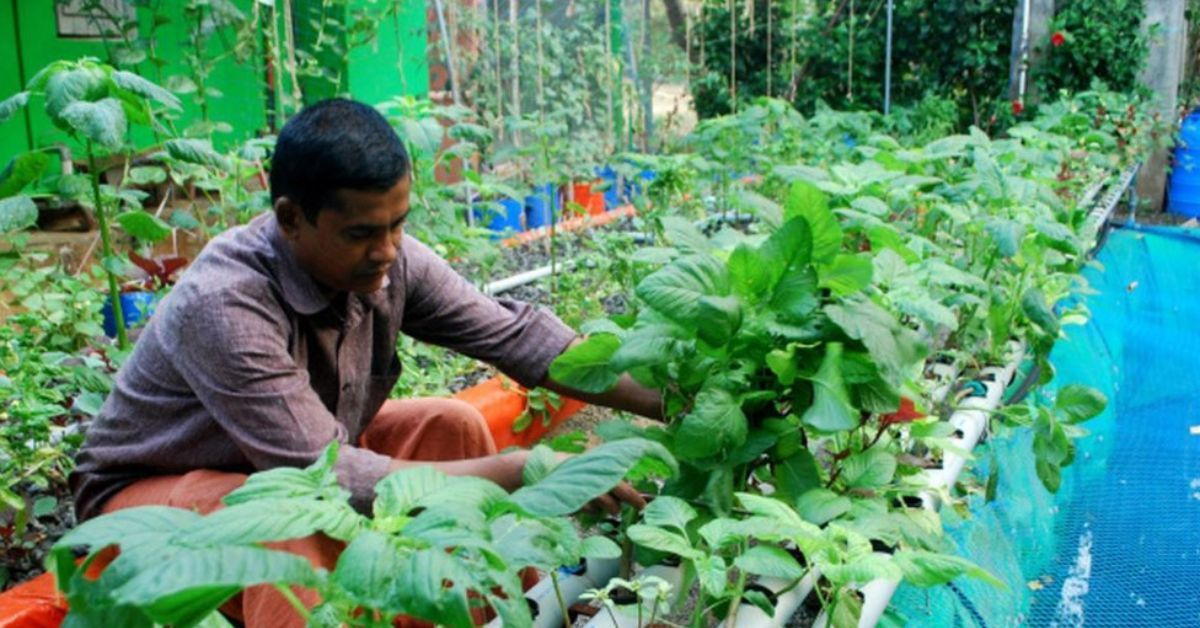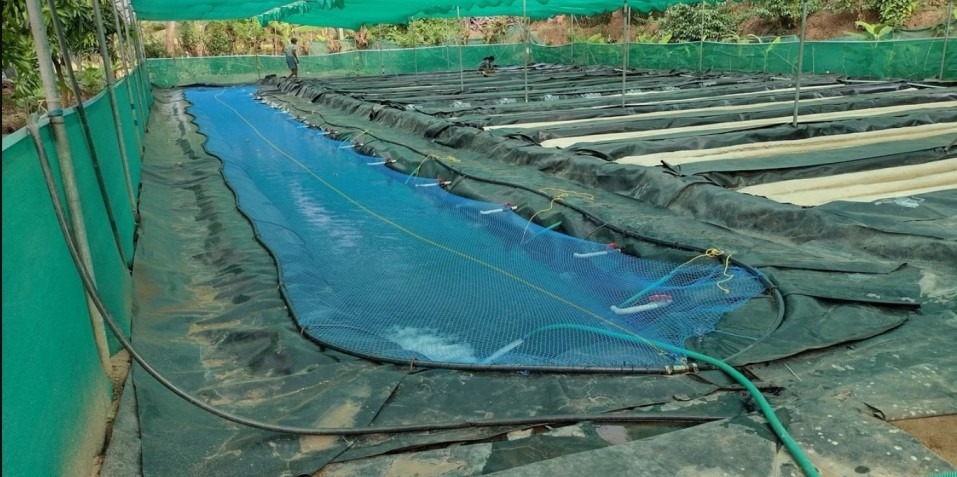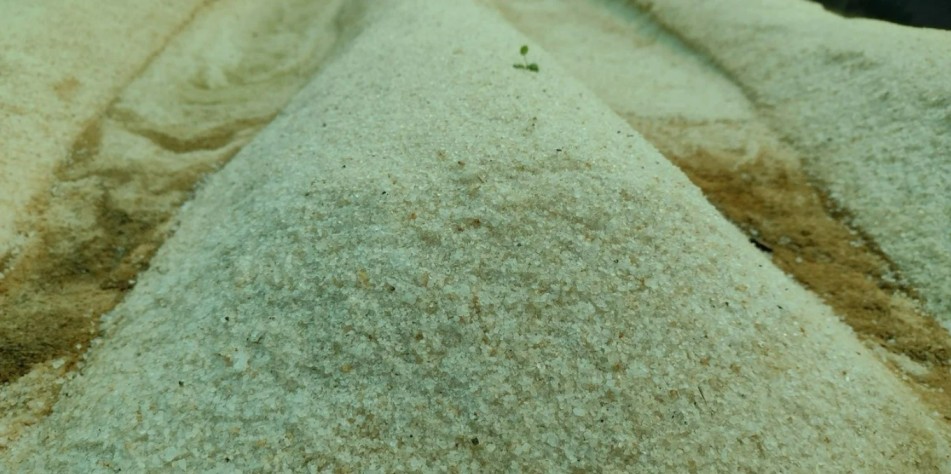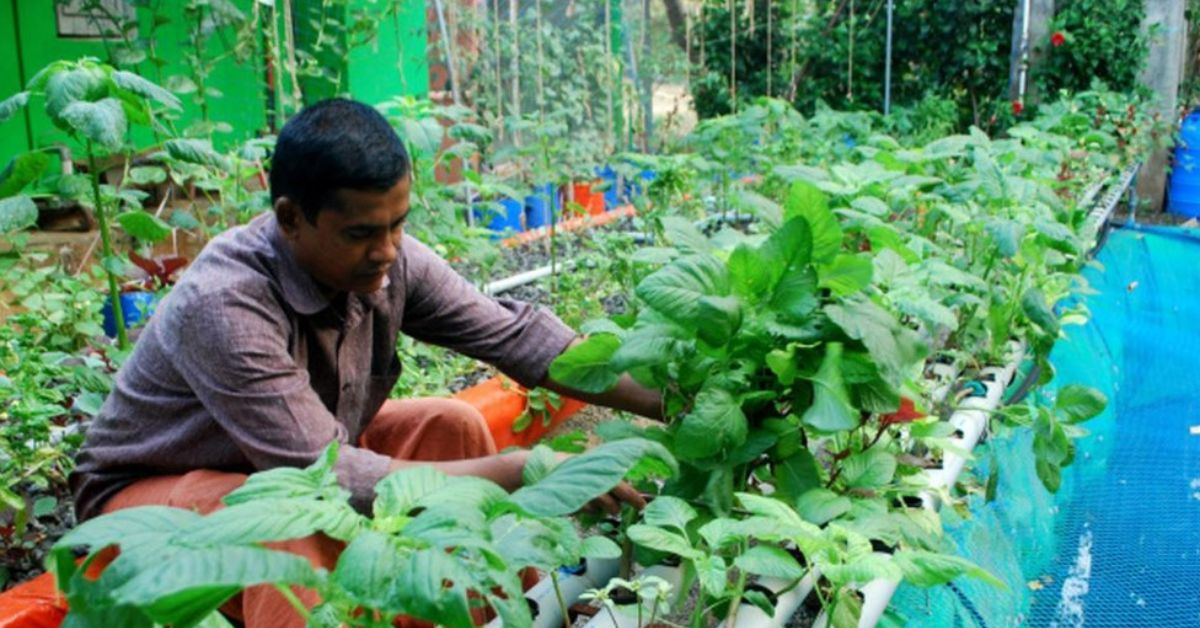An Uprooted Tree Helped Kerala Farmer Earn Up to Rs 4 Lakh From Fish & Veggie Farming
Vijayakumar Narayanan, a passionate farmer and agriculture consultant in Kerala, has been successful in implementing the aquaponics method of farming wherein fish and vegetables are grown together using fewer resources.

Back in 2012, when Palakkad-native Vijayakumar Narayanan returned from Muscat after toiling in various jobs for 20 years, he was unsure of what to do next. He could always farm at his ancestral house in Nanniyode but what?
So he pored over books about new farming techniques and crops which were suitable for Kerala’s climate. The mathematics graduate finally decided to go forward with aquaponics, a method that involves a combination of aquaculture, hydroponics and organic agriculture. The nutrients from fish excreta enrich the water which is then used for the plants.
“While working in Muscat I attended a few classes about hydroponics farming which is the method of farming without the use of soil. Aquaponics is similar but more organic with an added advantage of double income from fish as well,” says the 52-year-old to The Better India.
But what pushed him towards aquaponics was a particular incident in the 2012 monsoon. There was a big tree in Vijayakumar’s backyard which collapsed leaving a big hole in the land. It was filled with water because of the rains and he decided to use the pit as a tank.
Today, his fish tank consists of Nile tilapia, carp and giant gourami and even small ornamental fish. “I feed them natural on-farm inputs as supplementary feed such as Azolla, colocasia leaves, rice bran, and black soldier fly larvae, coconut and groundnut oil cake which are comparatively inexpensive and organic,” he says.
In the surrounding area of the tank, Vijayakumar planted various types of vegetables like broccoli, lettuce, spinach, mint, tomato, okra, chillies, brinjal and more.
Ammonia from the fish waste contains nitrites and nitrates formed through bacterial action which is an ideal fertiliser for plants. Even the banana plants in Vijayakumar’s backyard are provided with nutrient-rich water to get good yields.

“The biggest advantage of aquaponics is that by spending for the feed of fish alone one can harvest good yields from both fish and vegetable farming. There were not many aquaponic farms in Kerala when I started. So, I also started an institution called Nanniode Aquaponics Research and Development Centre (NARDC) in my village. Here, I provide classes on aquaponics organic farming, integrated aquaculture, polyhouse/rain shelter horticulture (design, management, mentoring, operations), biological pest management, organic farming, commercial enterprise development assistance and more,” explains the agripreneur.

NARDC also conducts test production and yield trials of heirloom, hybrid and imported seed varieties in various Integrated Aquaponics System (IAS) settings. “We also produce and sell live fish, fresh greens and poison-less vegetables and fruits to local Community Supported Agriculture (CSA) subscribers, sales of heirloom and hybrid plant seeds, fish seedlings and aquaponics apparatus. NARDC also works in partnership with governments, universities, NGOs, private sector organisations, individual farmers and franchisees to develop aquaponics systems,” he says.
So far, Vijayakumar has trained more than 5,000 farmers from several parts of the country, both online and offline, not just in aquaponics but in various other arenas of agriculture. He also initiates social franchising of aquaponic farms through his institution. “I have assisted in setting up farms in Idukki, Ernakulam, Thrissur, Wayanad, Goa, Telangana, Coimbatore, Madurai, Pondicherry, Bhopal, Kanyakumari, Chennai, and even Gulf countries,” he adds.
Less space, bigger result
“To put together an aquaponics farm, all you need is a 2-cent land (~less than 900 sq ft) out of which one cent is dedicated to the fish pond and the remaining for the crops. You can grow up to two tonnes of fish in such a tank. Tilapia is the best choice, especially for a beginner. Never get into this farming without taking proper classes about it as it is completely different from normal farming,” says the cultivator.
Vijayakumar adds that testing the pH value of water is a must before depositing the fish babies. Plants are to be grown on sheets of sand laid on the banks of a pond. The most suitable sand for cultivation is quartz silica, which has more organic elements than river sand. Two pumps are needed for blowing air into the pond and for pumping water on the sand biofilters where plants are grown. “All these can be bought under subsidies from the horticulture department,” he says.
Almost all types of vegetables can be grown this way, except tubers, says Vijayakumar. “Airborne pest attacks may happen but biopesticides can control this completely,” he assures.

“I earn up to Rs 4 lakh per year from this type of farming. The income will increase based on the area and investment,” adds the aquaponics consultant who has launched another aquaponics project – The Venus Project. “We aim to feed about 130 people (30 families) with clean, fresh and highly nutritious fish, vegetables and fruits year-round. We are hoping to provide the food locally through weekly packages based on subscriptions,” he claims.
The passionate agripreneur adds that the Venus project supports 26 local households with weekly nutritious food, vegetables, fruits and fish.
To get in touch with Vijayakumar Narayanan, contact +91 81292 19282 or write to [email protected].
Edited by Yoshita Rao
Photo credits: Vijayakumar Narayanan
If you found our stories insightful, informative, or even just enjoyable, we invite you to consider making a voluntary payment to support the work we do at The Better India. Your contribution helps us continue producing quality content that educates, inspires, and drives positive change.
Choose one of the payment options below for your contribution-
By paying for the stories you value, you directly contribute to sustaining our efforts focused on making a difference in the world. Together, let’s ensure that impactful stories continue to be told and shared, enriching lives and communities alike.
Thank you for your support. Here are some frequently asked questions you might find helpful to know why you are contributing?


This story made me
-
97
-
121
-
89
-
167













